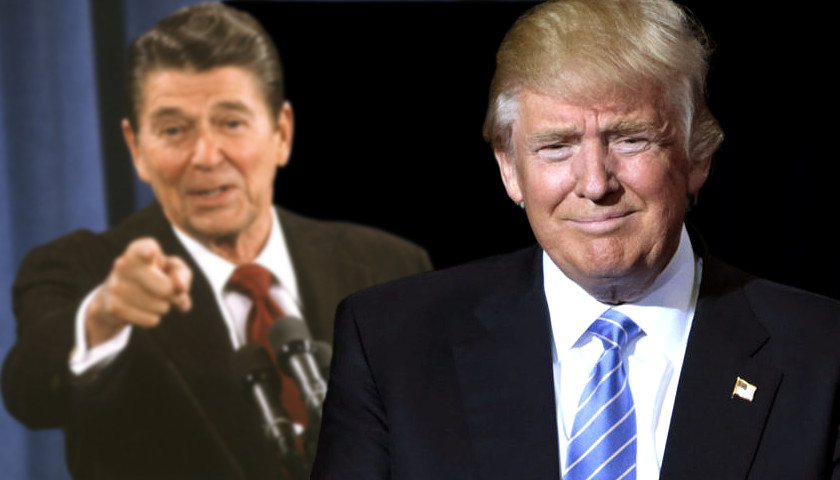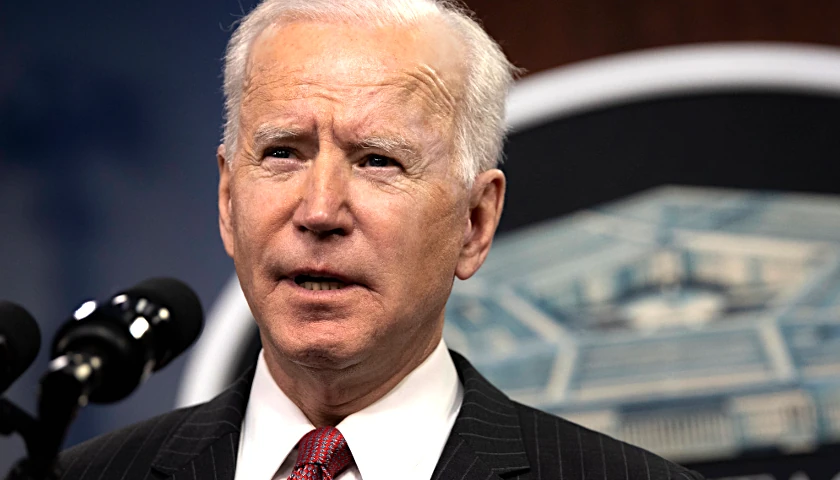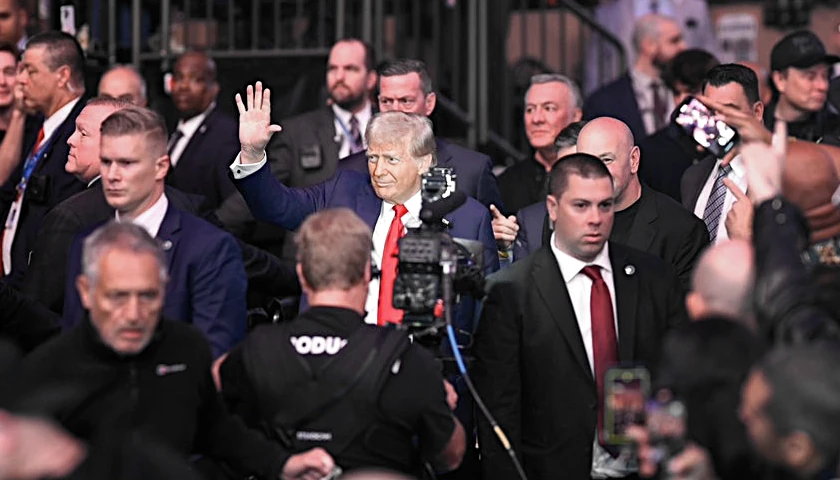by Jeffery Rendall
As I strolled through the excellent and memory-provoking exhibits at the Ronald Reagan Presidential Library (in Simi Valley, CA) the other day I was struck by how similar President Donald Trump’s approach to today’s politics is to the way Ronald Reagan handled the subject a half century ago.
For starters, Reagan and Trump’s optimistic pro-American emphasis is nearly identical. They both appealed to the patriotic propensities of country-loving individuals to rise up and be the best they possibly can be, so that everyone might achieve their goals and dreams as long as they’re willing to work hard, sacrifice and put stock in the best nation on the planet.
At their core both Reagan and Trump mastered a populist message and used it to ignite a movement (unfortunately in their cases, very personality-centered). Both acknowledged America as the lead source of good in the world and championed American exceptionalism as their signature value. Both were extremely media savvy and understood mass communications and messaging to perfection.
It almost appears as though Trump’s emulated Reagan’s political career and added his own personal touches to match the legendary effectiveness of the great communicator. Reagan didn’t have Twitter, of course, and I wondered how things might have been even better for ‘The Gipper’ had he been able to bypass the liberal establishment media claptrap (as Trump has done so well) in his day.
Where Reagan and Trump diverge is their orientations towards government. Simply put, Reagan saw the growth of government as holding people back…and Trump, at least at a basic level, thinks government can be used to do things and help people (such as cure the opioid epidemic).
Reagan relentlessly pounded the notion of reducing the size of government and spending along with it. In contrast Trump pays lip service to making government smaller yet isn’t bothered by Congress’s big spenders or the growing federal budget deficit.
As conservatives we appreciate Trump for what he is and all he’s done in virtually every corner of American culture and government, yet the excessive spending problem cannot be ignored. Michael Tanner wrote the other day at National Review, “As Milton Friedman pointed out, the true cost of government is not found in taxes or debt, but in spending. Taxes and borrowing are just alternative ways of paying the cost. A smaller, less costly, less intrusive government would be better for all of us, would generate more growth, and would require fewer taxes to pay for it.
“Yet Donald Trump is on track to be an even bigger spender than Obama. Federal spending has increased by 7.5 percent, or almost $300 billion, over President Trump’s first couple of years in office. Conservatives might applaud the over 8 percent increase in defense spending, although that increase seems unrelated to any strategic plan or external threat. But what should Republicans make of the 7 percent increase in domestic spending? …
“President Trump’s supporters like to point out that he does things differently than previous presidents. No doubt. Unfortunately, however, when it comes to big spending and fiscal irresponsibility, President Trump is as conventional as they come.”
Tanner’s article highlights a tweet from Michigan conservative/libertarian Justin Amash which sums up the degree of unease many conservatives feel at the virtually unrestrained Trump-era borrow and spend bonanza. Amash tweeted, “The post-2016 Republican Party has abandoned even the pretense of fiscal conservatism. My colleagues used to pay lip service to limited government and less spending; now, they don’t even bother.”
Amash’s point is sad but true; the Republican elephant used to embody a different connotation – though the symbol is beefy (as an elephant should be) the party supposedly stood for skinny budgets, tight fiscal discipline and Americans getting the most value for their hard-earned tax dollars. Regretfully it doesn’t appear to be this way anymore — and one wonders exactly what it would take to restore the GOP to its original Reagan-like pennywise foundation.
In all fairness it isn’t just Trump who’s nonchalant about the hideous borrowing. The party’s congressional leadership capitulated and compromised to its detriment over the years, failing at practically every turn to utilize the power of the purse to alter the direction of the spending river.
For instance, Congress wasn’t forced to pay for Obamacare after 2010 because the House of Representatives controls the purse strings (and the GOP held the majority). Similarly, there’s no rhyme nor reason for Republicans to continue funding things like ethanol subsidies or the disgusting corporate welfare promoting Export/Import Bank. Realistically speaking, if the GOP leadership possessed the internal fortitude to shut off the federal spending spigot the Washington waste drain would’ve gone dry a long time ago.
Reagan fought similar battles with Congress in the eighties, and even agreed to a modest tax increase in exchange for earnest assurances from congressional leaders (from both parties) that they’d reduce spending by three dollars for every additional dollar in raised revenues. It never happened – the special interest pleasing pols didn’t follow through on their spending-cut promises. Reagan said agreeing to raise taxes was one of his biggest regrets as president.
Trump exhibits no such Reagan-like gumption to restrain the federal spending beast, though he’s repeatedly said he believes the Congressional Budget Office’s growth projections are too modest – and therefore tax revenues will be greater than forecasted in the years to come. We’ll see. But even the most optimistic growth estimates can’t change the actuarial tables and entitlements continue their march towards doom in the shadowy future.
Needless to say Trump trumpeted the defense outlay increases Republicans “won” in the most recent budget negotiations and his proposed gargantuan infrastructure package leans at least partially on public/private partnerships. But it’s still spending.
To his credit Trump’s also proposed modest budget rescissions that were rejected by members of his own party. The ability of one or two Republicans to sabotage the entire budget cutting movement is pathetic – and again, points to a lack of leadership on Capitol Hill.
Yet Trump would still do well to take a page out of Reagan’s government cutting book. The president needs clarity – and most importantly, he shouldn’t give up. Adam Andrzejewski & Tom Coburn wrote at the Washington Examiner, “Breaking through the noise and controversies of the day with a message of fiscal stewardship is difficult but if anyone can do it, Trump can. Our fight against earmarks during the Bush years provides a useful tactical lesson.
“We learned that taking on individual targets like the Bridge to Nowhere can be a more productive strategy than proposing across the board cuts or offering multiple cuts at once. Our initial vote to eliminate funding for the bridge failed 82-15 but we won in the court of public opinion. Congress imposed an earmark moratorium in 2010. While the ban is imperfect it’s still in place eight years later. Trump may find that picking more targeted fights can turn the tide and produce big savings.
“Neither former Presidents Barack Obama nor George W. Bush offered any rescissions packages, so Trump’s attempt at this method should be welcomed. Former President Ronald Reagan cut spending by $15 billion through 133 separate rescissions in 1981 and cut another $16 billion in 1986 through 245 separate cuts.”
President Reagan made cutting government a centerpiece of his platform and he carried through with promises (through vetoes) to at least try to make it a reality. Reagan (and Trump too) continually called for a line-item veto to eliminate wasteful spending (but the federal courts ruled such a measure would require a constitutional amendment to create).
Reagan’s two terms saw tax receipts double – but federal spending tripled during his time thanks to a Congress that couldn’t get itself under control. Sound familiar?
Thankfully Trump has already focused on individual expenditures to some extent – just look at his objections to paying a premium for the new Air Force One planes Boeing is assembling (for completion in late 2020 or 2021). Trump famously tweeted that the costs were too high, which then led to well-publicized negotiations and a reduced overall price.
The president’s also emphasized getting “good deals” on numerous other government related expenditures and it goes without saying he’s looking to stick Mexico with paying for the certain-to-be-constructed border wall. While Trump isn’t nearly the government-cutter Reagan hoped to be there’s no doubt he values tax dollars and mentions fiscal stewardship frequently.
Nonetheless, more can and should be done – and it would help him politically too. If Trump would only get on the government cutting bandwagon it would virtually guarantee his reelection and could earn him the type of popularity Reagan enjoyed in 1984 (when he won 49 states and nearly 60 percent of the popular vote). Right now, Trump would probably settle for reaching the magic 50 percent approval level.
Trump’s shown remarkable resilience in the polls, creeping ever upward – which is confounding Democrats. Niall Stanage wrote at The Hill, “President Trump’s approval rating is largely unchanged in the first polls to emerge after his widely criticized performance at last week’s joint press conference with Russian President Vladimir Putin — and Democrats are scratching their heads.
“An NBC News/Wall Street Journal poll released on Sunday showed Trump’s approval rating rising to 45 percent, his highest level in that poll since taking office. And an Economist/YouGov survey showed no significant deviation from Trump’s numbers the previous week…
“Democratic explanations for Trump’s resiliency encompass several factors: the strength of the economy; his voters’ tendency to discount negative press coverage as a product of the ‘fake news media’; and the visceral connection he enjoys with his base, partly because of his willingness to press cultural hot buttons relating to race, immigration and related issues.”
Yeah, that’s right Democrats — keep thinking Trump remains faithfully supported by Republicans and conservatives because we’re all a bunch of backwards rednecks who work with our hands, love guns, mistreat our women and disdain immigrants and people of color. As long as Democrats keep tossing out this race card nonsense Trump will continue to thrive.
If there’s a true explanation for Trump’s poll resilience it’s found at the Reagan Library. Simply put, Trump speaks to the same constituency that loved Reagan so earnestly, namely Americans who honor borders and traditional culture. Unlike many in the GOP (a.k.a. the establishment) Trump always stands up for the forgotten Americans through his statements, policies and willingness to put our citizens’ interests before those of foreigners.
When Trump stood next to Putin at last week’s Helsinki summit press conference he didn’t make excuses for America – and he certainly didn’t apologize either. Trump also didn’t take Putin’s side of the argument against his own intelligence community; he simply articulated views that many in this country share. That’s why Trump remains comparatively strong in the polls despite the media’s perpetual predictions of his unavoidable undoing.
Americans aren’t buying that Putin represents the second coming of Soviet Communism either. Patrick J. Buchanan wrote at The American Conservative, “It has one-tenth the population and one-fifth the economy of its looming neighbor, China, and, except for territory, is even more dwarfed by the United States with a GDP of $20 trillion, and troops, bases and allies all over the world.
“Most critically, Russia’s regime is no longer Communist. The ideology that drove its imperialism is dead. There are parties, demonstrations and dissidents in Russia, and an Orthodox faith that is alive and promoted by Putin. Where, today, is there a vital U.S. interest imperiled by Putin?
“Better to jaw-jaw, than war-war, said Churchill. He was right, as is President Trump to keep talking to Putin—right through the Russophobia rampant in this city.”
Ronald Reagan battled the real Soviet menace – a Reagan Library tour reveals the differences between then and today. As Buchanan pointed out in his excellent piece Russia hardly threatens anyone from afar these days. And there aren’t any hints they’re planning to use their formidable nuclear arsenal, either – at least not in an offensive capacity.
Comparisons between Ronald Reagan and Donald Trump will continue as long as the current president emulates The Gipper’s America First playbook. Trump would do well to copy Reagan in one other respect – to call for big reductions in spending. If he does so, popularity will certainly ensue.




